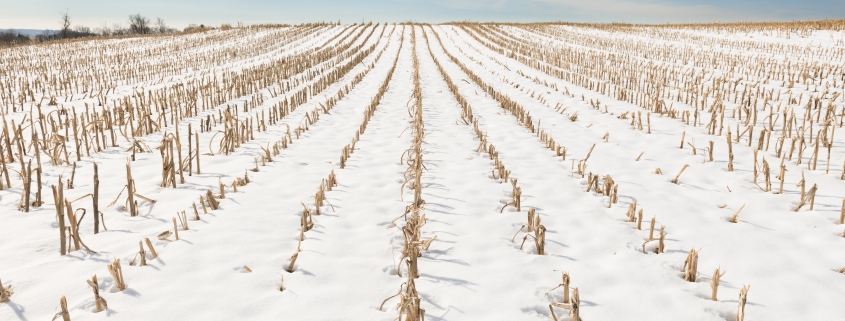IP Crop Network, Mid-Winter Report
This feature from SSGA’s Agronomy Action Team highlights growing conditions for identity preserved crops from different regions around the country. Thanks to the states/regions that contributed to this mid-winter report.
Minnesota
Minnesota is experiencing winter weather! December was extremely warm. It appears a remarkable amount of field work was completed in December. It was so warm; I almost had on a short sleeve New Year’s Eve. Then our typical winter weather hit with a vengeance. Sub-0oF weather, near gale force winds and powdery snow became the norm. Snow cover across the state varies from bare ground to a foot deep. There appears to be more snow cover as you head west and north.
Soil moisture, or lack thereof, is of concern. The Jan. 9 Minnesota Drought monitor reports 15% of the state is not in drought status, 45% is rated abnormally dry and about 40% is in D1-D3 drought status. Prior to the last storm, 2-inch depth soil temperatures in southern Minnesota were hovering around 32oF. Consequently, what little moisture that fell in December infiltrated rapidly into the soil rather than running off into surface waters.
Discussions at the December crop meetings centered around the warm winter and the potential impact on pest pressure at planting. Concerns about reduced mortality of a variety of overwintering pests, and the subsequent need for chemical seed treatments, were frequently expressed. These concerns seemed to be reduced with the arctic weather of early January.
Concerns about soil water at planting seem to be increasing. Two dry years in a row has depleted deep (2 feet) soil water. Surface (top 6 inches) soil moisture levels vary across the state due to variable amounts of precipitation that fell near harvest. Current snow levels are helpful but would be insufficient to “make a crop.” Concerns on the effectiveness of applying pre-emergent herbicides in dry soils were also expressed. These dry conditions are worrisome; however, it is a long time until April. Most of the farmers I talked with of late are planning on maintaining their current crop plan for 2024. These planting plans may, or may not, change. It will all depend on the weather around planting time (April through May).
– David Kee, Director of Research, Minnesota Soybean Research & Promotion Council
Wisconsin
It’s too early to say anything.
— Shawn Conley, State Extension Soybean and Small Grain Specialist, University of Wisconsin-Madison
Michigan
Thoughts about the 2024 growing season bring to mind the end of 2023. Wet conditions during harvest of many crops have left fields with compaction and tracks from combines, grain carts and trucks. In some cases, these tracks remain in the field because wet conditions persisted very late with lack of freezing temperatures to firm the surface to allow traffic and tillage. December temperatures were warmer than normal with little soil freezing. The first cold temperatures in January have come after significant snowfall. So, still not frozen soil. Forecasts for temperatures in the remaining winter season show warmer than normal conditions.
Optimism is the most common outlook among growers but are tempered by the expectation that commodity prices may be lower than the recent past.
– Mark Seamon, Research Director, Michigan Soybean Committee
Illinois
Recent rain events have added much needed moisture to the soil profile, with most areas of the state now seeing tiles run again for the first time in nearly a year. Recent heavy rains in the southern half of Illinois have refilled most surface ponds and lakes and even a few of the smaller creeks and rivers have reached flood stage. Planning for the 2024 crop is in full swing with most growers looking to stay pretty close to acres on both corn and beans. Input prices have softened some with prepay fertilizer prices on NH3 in the $750/ton range compared to $1,200/ton a year ago. The steady decline in grain prices is probably the most troubling factor in the countryside right now. The University of Illinois released their 2024 crop budgets projections, and are negative across the entire state for corn and beans.
There was a significant amount of residual income from the 2022 crop that growers tapped into to make 2023 feel okay, however, those dollars are gone. As we progress through the late winter into spring, crop insurance prices will be set in March. Without a significant rally in prices, revenue guarantees will be well below production costs.
– Scott A. Eversgerd, Field Agronomist – Southern Illinois, Pioneer Hi-Bred Int’l







Leave a Reply
Want to join the discussion?Feel free to contribute!